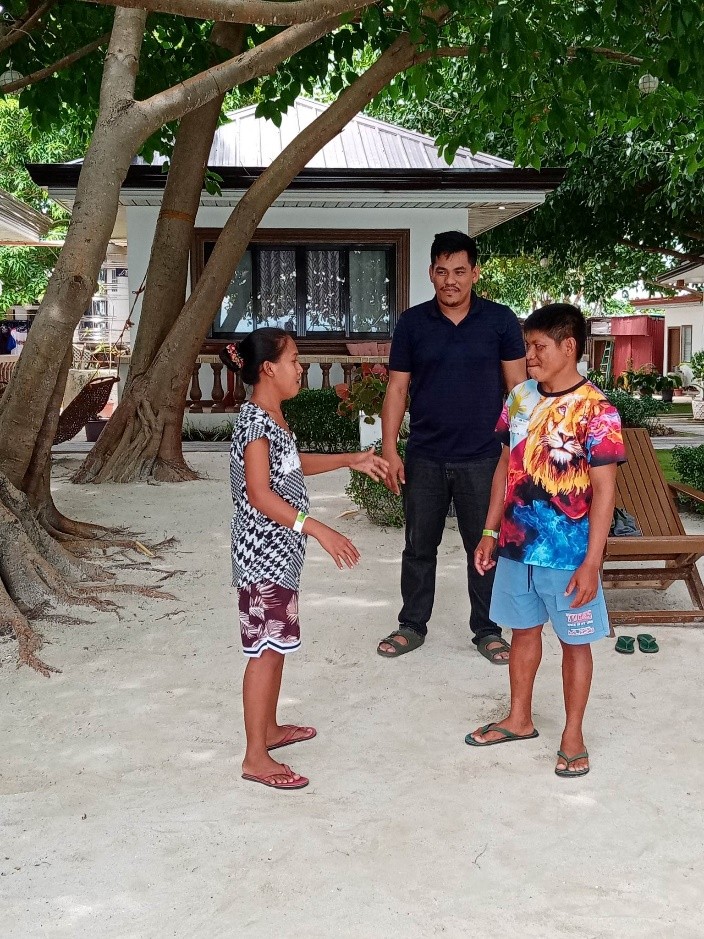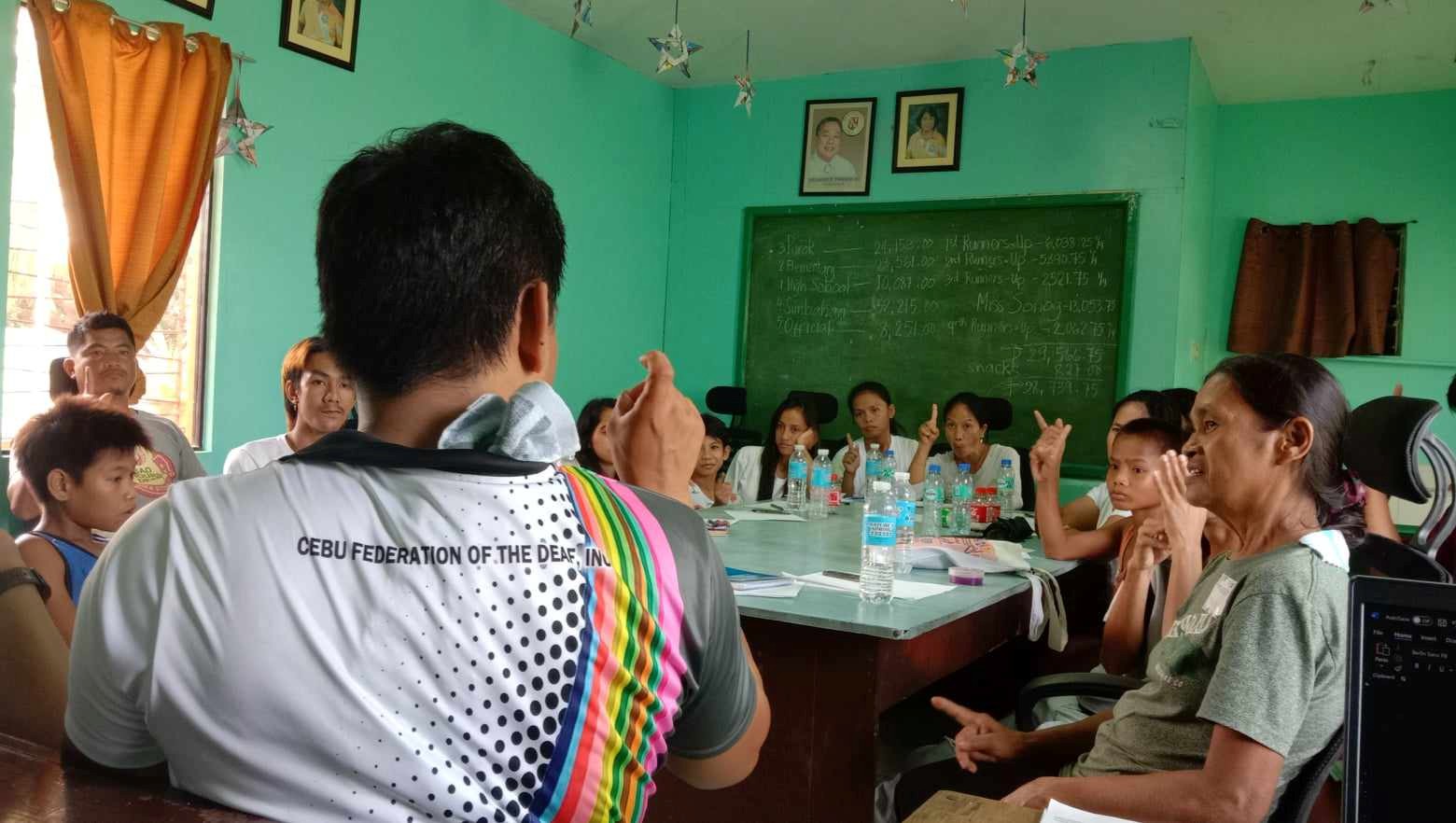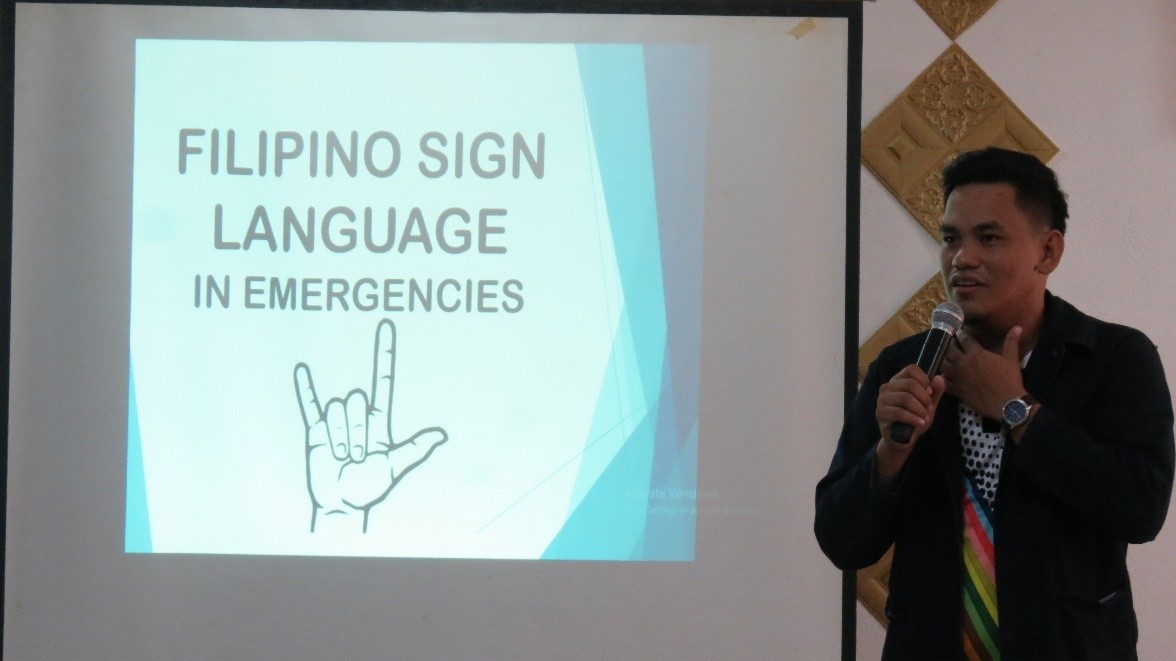In 2023, the A2D Project—Research Group for Alternatives to Development, in partnership with ASB South and South-East Asia and with funding support from the Federal Ministry for Economic Cooperation and Development (BMZ), Germany, launched an initiative to strengthen inclusive disaster resilience in the island and coastal communities of Cebu, Philippines.
From the outset, A2D worked to build strong, trust-based relationships with community partners. Courtesy meetings and project presentations were conducted across ten barangays in San Francisco, Lapu-Lapu City, Cordova, and Santa Fe, as well as with municipal and city government officials. These engagements led to A2D’s formal recognition as a development partner, demonstrated through the issuance of certificates of accreditation by the respective local governments.

Beyond building partnerships, A2D conducted a participatory baseline study examining local disaster risk reduction and management (DRRM) systems, contingency plans, and the functionality of Organisations of Persons with Disabilities (OPDs). The study highlighted several key needs: raising public awareness about disability rights, integrating inclusion into barangay programs, and strengthening OPD leadership and governance. These findings became the blueprint for the project’s next steps—training, mentoring, and inclusive governance advocacy—validated and owned by the communities themselves.
In its first year, the project focused on strengthening the capacity of ten OPDs across the project areas through a series of organisational and leadership trainings.
The first set of trainings introduced participants to disability rights, inclusive disaster risk reduction (DiDRR), intersectionality, inclusion, and accessibility. A total of 12 training batches were completed—five more than initially planned—reaching 291 participants. Among these were 71 deaf individuals or their guardians, who received sessions tailored to their communication needs.
Next came the leadership and self-awareness trainings, which aimed to enhance self-confidence, foster positive identity, and develop community leadership skills among persons with disabilities. Across 17 training batches, 399 participants took part. These sessions inspired OPDs to revise their core documents, identify shared values, and formulate two-year action plans. Regular mentoring and coaching further strengthened their internal management and even led to the election of new, active leaders to ensure continued engagement.
To ensure inclusion extended beyond OPDs, the project also trained 125 local officials and DRR personnel on inclusive facilitation—equipping them to integrate accessibility and disability perspectives into activity design and disaster planning. Meanwhile, four batches of DiDRR training, attended by 179 participants, resulted in tangible outputs: updated hazard maps, inclusive evacuation routes, and improved early warning systems.

These efforts were complemented by information and education campaigns—from social media posts to participation in local and international DiDRR events—fostering a culture of inclusion and awareness across communities.
When the project first began in the coastal and island communities of Cebu, it was clear that inclusion was more than a goal—it was a journey that needed patience, empathy, and understanding. About six months into the implementation, members of the local Organisations of Persons with Disabilities (OPDs) had already shown remarkable progress. Among them, one group stood out—the members who are deaf or hard of hearing.
It all began during one of the community-level training sessions held in August. As the sessions progressed, other OPD members—particularly those with physical disabilities—noticed something important: their peers who are deaf struggled to follow the discussions and group activities. The lack of interpretation or accessible communication left them at a disadvantage.
Rather than letting this gap persist, the OPD members themselves took action. They approached the facilitators with a unified proposal: to organise a separate and dedicated training for members who are deaf or hard of hearing, so that they could participate fully and equally. The idea was quickly supported by OPD leaders, including those who are deaf, marking a turning point for the group.

In response, the project team launched a Training on the Basics of Filipino Sign Language (FSL) and Sign Language Literacy, specifically designed to cater to the needs of deaf and hard-of-hearing OPD members. The training was conducted regularly—around once every two months—and sometimes even involved parents or guardians so that they could learn to communicate better with their children.
The initial sessions started simply—with alphabets, numbers, and basic demographic information. But what began as basic sign practice soon grew into something much deeper. The participants, once quiet and hesitant, began to connect with one another. They learned to express themselves, share stories, and communicate their thoughts confidently. Over time, their self-esteem and sense of belonging visibly flourished. Many who used to prefer staying indoors began engaging more actively in community events and OPD meetings.
The impact extended beyond the OPD members. Recognising that inclusion requires a collective effort, the project also trained local government officials and community frontliners from barangay, municipal, and city levels on the basics of FSL, particularly in emergency contexts. During the rollout training on Disability-inclusive Disaster Risk Reduction (DiDRR), these officials learned how to communicate effectively and provide assistance to deaf or hard-of-hearing individuals during disasters—ensuring that no one is left behind in times of crisis.

Through these combined efforts, the community witnessed a quiet but powerful transformation. The deaf and hard-of-hearing members no longer felt isolated; they became active participants in shaping their community’s resilience. Their interactions during group dynamics sessions—silent yet rich with meaning—became symbols of empowerment and inclusion.
What began as a simple request for understanding evolved into a movement of empowerment, breaking down communication barriers and strengthening solidarity across disabilities. In the coastal communities of Cebu, inclusion is no longer just about accessibility—it’s about connection, confidence, and collective resilience.
Through these collective efforts, the island and coastal communities of Cebu have witnessed a quiet but profound transformation. Persons with disabilities are no longer viewed as passive recipients of aid—they have become confident leaders and equal partners in shaping community resilience.
From establishing inclusive evacuation plans to mastering sign language, these communities have shown that true resilience is built on empowerment and empathy. What began as a call for accessibility has grown into a movement of solidarity, dignity, and shared responsibility—proving that when inclusion takes root, resilience follows.

